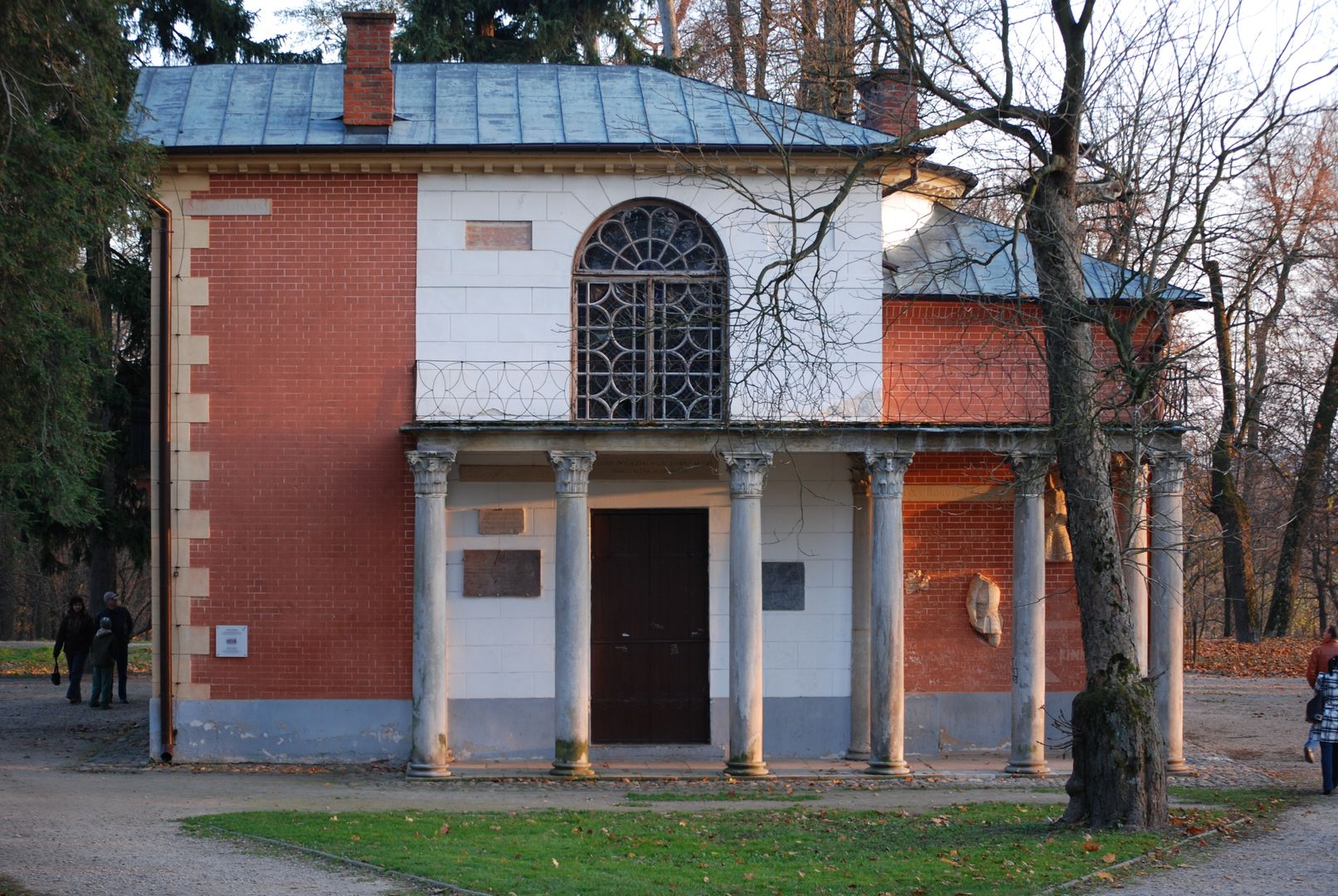Gothic House in Puławy
7.42

Overview
The Gothic House in Puławy is a small neo-Gothic building that forms part of the palace and park complex adjacent to the Czartoryski Palace. Constructed between 1801 and 1809 according to a design by Chrystian Piotr Aigner, it was built on the foundations of a Baroque garden pavilion destroyed by Russian troops in 1794. Its construction incorporated architectural fragments brought from Italy, Spain, and historic sites in Poland, collected by Princess Izabela Czartoryska. The Gothic House was created as a place to store and display national collections, with the intention of gathering world art. Its original appearance differs from the present one, due to extensive damage over time, including the removal of stone elements by Russian authorities after the November Uprising. The structure combines elements of English style with neo-Gothic architecture, featuring two wings intersecting at a right angle, adorned with columns and pointed-arch arcades. The entrance is through main iron doors, and the interiors include a semi-circular heraldic hall, which was historically used to exhibit important works of art. The ground floor contains an anteroom with a colorful stained-glass window, while the first floor houses an armory and valuable collections. An interesting fact related to the Gothic House is its association with art masterpieces; it once displayed works such as Leonardo da Vinci's "Lady with an Ermine" and Raphael's "Self-Portrait." Today, the Gothic House and its collections are part of the Regional Museum in Puławy, managed by the Polish Tourist and Sightseeing Society.
Location
City
Puławy
Tertiary Administrative Division
Opole Lubelskie
County
Łęczyński County
State
Lublin Voivodeship
Country
2025 Wizytor | All Rights Reserved